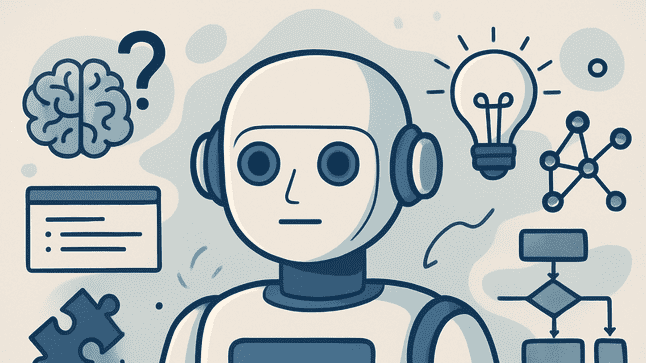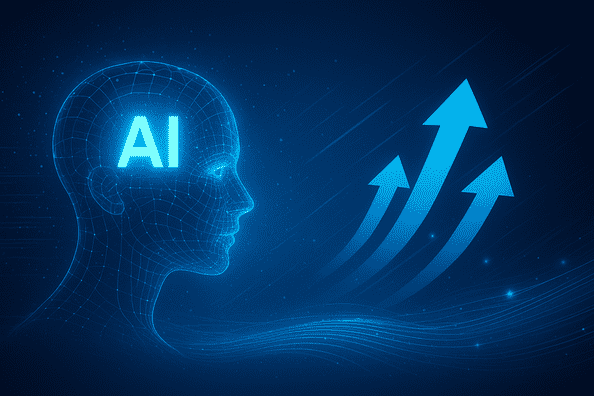The artificial intelligence landscape witnessed a seismic shift when DeepSeek unveiled its R1 reasoning model, marking what could be the beginning of truly accessible everyday reasoning AI. Unlike traditional language models that excel at pattern matching and text generation, DeepSeek’s R1 represents a fundamental leap toward AI systems that can think through problems step-by-step, much like humans do when solving complex challenges. This breakthrough model demonstrates remarkable capabilities in mathematical problem-solving, code generation, and logical reasoning tasks, achieving performance levels comparable to OpenAI’s o1 series while maintaining cost-effectiveness and accessibility. The implications extend far beyond academic benchmarks, suggesting we may finally be approaching an era where sophisticated AI reasoning becomes integrated into everyday applications, from personal assistants to professional tools, fundamentally changing how we interact with technology in our daily lives.
Understanding the Breakthrough Behind DeepSeek’s R1 Model
DeepSeek’s R1 model represents a paradigm shift in how artificial intelligence approaches complex problem-solving, moving beyond simple pattern recognition to genuine reasoning capabilities. The model was developed using large-scale reinforcement learning without traditional supervised fine-tuning as a preliminary step, allowing it to naturally emerge with powerful reasoning behaviors. This approach differs significantly from conventional AI training methods, where models learn to predict the next word based on vast datasets. Instead, R1 learns to think through problems systematically, breaking down complex challenges into manageable steps and evaluating different solution pathways before arriving at conclusions.
The technical foundation of R1 builds upon DeepSeek’s V3-Base architecture, incorporating 61 transformer layers and advanced features like Multi-Head Latent Attention and Mixture-of-Experts components3. This sophisticated architecture enables the model to handle diverse reasoning tasks while maintaining efficiency and scalability. The model’s 128K context length provides ample space for complex reasoning chains, allowing it to maintain coherent thought processes across extended problem-solving sessions. What makes R1 particularly remarkable is its ability to demonstrate reasoning behaviors that weren’t explicitly programmed, suggesting that sophisticated thinking patterns can emerge naturally through proper training methodologies.
How Reinforcement Learning Transforms Traditional AI Thinking
Traditional AI models operate primarily through pattern matching, learning statistical relationships between inputs and outputs from massive datasets. This approach works well for tasks like language translation or image recognition but falls short when dealing with problems requiring logical deduction, planning, or causal understanding. Reinforcement learning fundamentally changes this dynamic by training models to receive feedback on their reasoning processes rather than just their final outputs. DeepSeek’s R1-Zero model, trained purely through reinforcement learning without supervised fine-tuning, demonstrates how this approach can lead to emergent reasoning capabilities that weren’t explicitly taught.
The reinforcement learning process allows R1 to develop its own problem-solving strategies through trial and error, much like humans learn to reason through experience. The model learns to value reasoning paths that lead to correct solutions while discarding approaches that prove ineffective. This creates a more robust and flexible thinking process compared to models that simply memorize patterns from training data. However, this approach also introduced challenges such as endless repetition, poor readability, and language mixing in the initial R1-Zero model. DeepSeek addressed these issues in the refined R1 model by incorporating cold-start data before reinforcement learning, creating a more balanced and practical reasoning system.
The Journey from Pattern Recognition to Everyday Reasoning AI
The evolution from pattern recognition to everyday reasoning AI represents one of the most significant advances in artificial intelligence development. Early AI systems could identify objects in images or translate between languages by recognizing statistical patterns in training data, but they struggled with tasks requiring genuine understanding or logical thinking. Reasoning in artificial intelligence involves using available information to generate predictions, make inferences, and draw conclusions through structured logical processes. This capability enables AI systems to tackle complex problems that require breaking down challenges into sequential steps and applying logical deduction to reach solutions.
Modern reasoning models like DeepSeek R1 bridge the gap between pattern recognition and genuine problem-solving by incorporating chain-of-thought processing and multi-step analysis capabilities. These systems can reflect on their own thinking processes, evaluate different solution approaches, and provide transparent explanations for their reasoning. This transparency makes AI reasoning more trustworthy and useful for real-world applications where understanding the decision-making process is crucial. The shift toward everyday reasoning AI means that these capabilities are becoming accessible to general users rather than being confined to specialized research environments, opening up possibilities for integration into consumer applications, business tools, and educational platforms.
Comparing DeepSeek R1 with OpenAI’s o1 Model Performance
DeepSeek R1 achieves performance levels comparable to OpenAI’s o1-1217 model across mathematics, coding, and reasoning benchmarks, representing a significant milestone in open-source AI development. This parity is particularly noteworthy given DeepSeek’s focus on cost-effectiveness and accessibility, demonstrating that high-quality reasoning capabilities don’t necessarily require massive computational resources or prohibitive costs. According to LiveCodeBench leaderboard assessments, DeepSeek’s upgraded R1 model ranks just below OpenAI’s o1-mini and o3 models in code generation tasks while surpassing other competitive models in the reasoning category.
The competitive landscape has intensified significantly since DeepSeek’s entry into the reasoning model space, prompting responses from major technology companies. Google has introduced more affordable access tiers for its Gemini model, while OpenAI has reduced prices and launched the o3 Mini model requiring less computational power. This competitive pressure benefits consumers and researchers by driving down costs and improving accessibility to advanced AI reasoning capabilities. DeepSeek’s approach challenges the assumption that substantial computing resources and massive investments are necessary for AI scalability, potentially democratizing access to sophisticated reasoning technology across different market segments and use cases.
| Model | Performance Area | Ranking | Key Strengths |
| DeepSeek R1 | Code Generation | Below o1-mini/o3 | Cost-effective, open-source |
| OpenAI o1-mini | Overall Reasoning | Top tier | Computational efficiency |
| OpenAI o3 | Complex Problems | Highest | Advanced reasoning depth |
| DeepSeek R1-Distill | Dense Models | State-of-the-art | Optimized performance |
Real-World Applications Where R1 Excels Beyond Traditional Models
DeepSeek R1’s reasoning capabilities shine in applications requiring systematic problem-solving and logical deduction, areas where traditional AI models often struggle. Mathematical problem-solving represents one of the model’s strongest use cases, where it can break down complex equations into manageable steps, apply appropriate mathematical principles, and verify solutions through logical checking processes. Similarly, in programming and software development, R1 demonstrates superior performance in code generation, debugging, and algorithm design by understanding the logical flow of programs rather than simply pattern-matching from existing code examples. These capabilities make it particularly valuable for educational applications, where students can receive step-by-step explanations of problem-solving approaches.
The model’s reasoning abilities extend to more practical everyday applications, including autonomous vehicle navigation, where it can analyze sensor data and make real-time decisions about complex traffic situations. In medical diagnostics, R1’s systematic approach to analyzing symptoms and medical data provides more reliable and explainable diagnostic suggestions compared to traditional pattern-recognition systems. Business strategy and planning represent another promising application area, where the model can evaluate different scenarios, consider multiple variables, and provide reasoned recommendations for complex decision-making processes. These applications demonstrate how everyday reasoning AI is moving beyond academic benchmarks to solve real-world challenges that directly impact people’s lives and work.
Key applications where R1 excels include:
- Mathematical problem-solving and theorem proving
- Advanced software development and debugging
- Medical diagnosis and treatment planning
- Business strategy and scenario analysis
- Educational tutoring and explanation generation
- Autonomous system decision-making
- Complex query answering and research assistance
Technical Architecture That Makes Reasoning Possible
The technical foundation of DeepSeek R1 builds upon sophisticated architectural innovations that enable genuine reasoning capabilities rather than simple pattern matching. The model employs Multi-Head Latent Attention (MLA) layers instead of standard multi-head attention mechanisms, allowing for more efficient processing of complex relationships within the input data. This architectural choice enables the model to maintain focus on relevant information while processing long reasoning chains, crucial for tasks requiring extended logical deduction. The Mixture-of-Experts (MoE) component allows the model to dynamically activate specialized sub-networks for different types of reasoning tasks, improving both efficiency and performance across diverse problem domains.
The model’s 128K context length, achieved through YaRN (Yet another RoPE extensioN method) technique, provides the necessary space for complex reasoning processes that require maintaining coherent thought chains across extended problem-solving sessions. This extended context capability is essential for reasoning tasks that involve multiple steps, intermediate conclusions, and backtracking when initial approaches prove insufficient. The Multi Token Prediction (MTP) feature allows the model to consider multiple possible next steps simultaneously, enabling more sophisticated planning and evaluation of different solution pathways. These architectural innovations work together to create a system capable of genuine reasoning rather than sophisticated pattern matching, marking a fundamental advancement in AI capability.
Addressing the Challenges of Language Mixing and Readability
DeepSeek’s initial R1-Zero model, while demonstrating remarkable reasoning capabilities, encountered significant challenges including endless repetition, poor readability, and language mixing that affected its practical usability. These issues arose from the pure reinforcement learning approach, where the model developed effective reasoning strategies but struggled with clear communication and consistent language use. The problem of language mixing was particularly concerning for practical applications, as users needed reliable and consistent communication from AI systems in professional and educational contexts. Poor readability made it difficult for users to follow the model’s reasoning process, reducing trust and usability despite the underlying logical soundness.
To address these limitations, DeepSeek introduced the refined R1 model, which incorporates cold-start data before reinforcement learning to improve communication quality while preserving reasoning capabilities1. This multi-stage training approach balances the emergent reasoning behaviors developed through reinforcement learning with structured communication patterns learned from high-quality training data. The result is a model that maintains sophisticated reasoning abilities while communicating clearly and consistently in a single language. This improvement is crucial for everyday reasoning AI applications, where users need to understand and trust the AI’s thought processes. The solution demonstrates that effective AI reasoning requires not just logical thinking capabilities but also clear communication skills to be truly useful in real-world applications.
The Economics of Accessible AI Reasoning Technology
DeepSeek’s R1 model challenges conventional assumptions about the economic requirements for developing and deploying advanced AI reasoning capabilities. The company’s success in creating a model comparable to OpenAI’s o1 series while maintaining cost-effectiveness demonstrates that sophisticated reasoning doesn’t necessarily require massive computational resources or prohibitive development costs2. This breakthrough has significant implications for democratizing access to advanced AI capabilities, potentially enabling smaller companies, research institutions, and individual developers to integrate reasoning AI into their applications without substantial financial barriers.
The competitive pressure created by DeepSeek’s cost-effective approach has already prompted responses from major technology companies, leading to price reductions and more accessible pricing tiers across the industry. Google’s introduction of more affordable Gemini access and OpenAI’s price cuts represent direct responses to DeepSeek’s challenge to the high-cost assumption of advanced AI. This economic disruption benefits consumers and businesses by making sophisticated AI reasoning more accessible while driving innovation in efficiency and cost optimization. The availability of open-source models like DeepSeek R1 also enables researchers and developers to build upon existing reasoning capabilities without starting from scratch, accelerating innovation across the broader AI ecosystem.
Economic advantages of DeepSeek’s approach include:
- Reduced computational requirements for deployment
- Open-source availability enabling rapid innovation
- Competitive pressure driving industry-wide price reductions
- Lower barriers to entry for small businesses and researchers
- Accelerated development cycles through shared technology
- Democratized access to advanced AI reasoning capabilities
Industry Impact and Competitive Response to DeepSeek’s Innovation
The release of DeepSeek’s R1 model has catalyzed significant changes across the AI industry, challenging established players and reshaping competitive dynamics in the reasoning AI space. Major Chinese technology companies, including Alibaba and Tencent, have responded by developing their own models claiming to outperform DeepSeek’s offerings, creating a rapid innovation cycle that benefits the entire ecosystem. This competitive environment has accelerated development timelines and pushed companies to improve both performance and cost-effectiveness of their reasoning models. The industry response demonstrates how breakthrough innovations can quickly transform market dynamics and drive widespread technological advancement.
International responses have been equally significant, with established AI leaders adjusting their strategies to maintain competitive positions. The technology stock market experienced notable declines following DeepSeek’s initial releases, reflecting investor concerns about the disruption to existing business models and assumptions about AI development costs. This market reaction underscores the transformative potential of accessible reasoning AI and its implications for established technology companies. The competitive pressure has ultimately benefited consumers and researchers through improved access to advanced AI capabilities, faster innovation cycles, and more diverse technological approaches to AI reasoning challenges.
Future Implications for Consumer AI Applications
The accessibility and effectiveness of DeepSeek’s R1 model point toward a future where sophisticated reasoning capabilities become integrated into everyday consumer applications. Personal AI assistants equipped with genuine reasoning abilities could help users solve complex problems, make informed decisions, and understand difficult concepts through step-by-step explanations. Educational applications represent a particularly promising area, where reasoning AI could provide personalized tutoring that adapts to individual learning styles and helps students develop their own problem-solving skills. The technology could transform how we approach learning, research, and decision-making in both personal and professional contexts.
Looking ahead, the integration of everyday reasoning AI into consumer devices and applications will likely create new categories of intelligent tools that go beyond simple information retrieval or task automation. Smart home systems could reason about user preferences and environmental conditions to make more nuanced decisions about comfort, energy efficiency, and security. Professional tools across industries could incorporate reasoning capabilities to assist with complex analysis, planning, and problem-solving tasks. As the technology continues to mature and become more accessible, we can expect to see reasoning AI become as commonplace as current AI features like voice recognition and language translation, fundamentally changing how humans interact with technology in their daily lives.
Future applications may include:
- Personalized educational tutoring systems
- Advanced smart home automation with contextual reasoning
- Professional analysis tools for complex decision-making
- Creative problem-solving assistants for design and innovation
- Healthcare support systems for personalized care planning
- Financial planning tools with sophisticated scenario analysis
Conclusion
DeepSeek’s R1 model represents more than just another advancement in AI technology; it signals the beginning of a new era where sophisticated reasoning capabilities become accessible to everyday users and applications. By demonstrating that high-quality AI reasoning doesn’t require massive computational resources or prohibitive costs, DeepSeek has challenged fundamental assumptions about AI development and democratized access to advanced cognitive capabilities. The model’s ability to think through problems systematically, provide transparent explanations, and maintain performance comparable to leading commercial models marks a significant milestone in the journey toward truly intelligent AI systems.
The implications of this breakthrough extend far beyond technical specifications or benchmark performances. As reasoning AI becomes more accessible and practical, we can expect to see transformative changes in education, healthcare, business operations, and countless other domains where complex problem-solving is essential. The competitive response from industry leaders and the rapid pace of innovation suggest that we are entering a period of accelerated development in AI reasoning capabilities. While challenges remain in areas like reliability, safety, and ethical deployment, DeepSeek’s R1 model provides a compelling glimpse into a future where everyday reasoning AI enhances human cognitive capabilities and transforms how we approach complex challenges in our personal and professional lives.



